Planetary Laws of Oryth
Etymology
The modern Common language word Oryth originates from the Primordial word orþō which roughly translates as from soil. Through evolution of language, this was changed to ortéōr in Draconic meaning long with the land, which eventually led to the Common pronunciation of Oryth. The word terra has also often been used and has its origins in the Elven tongue meaning home plane when they first discovered there were realms outside of the physical Material Plane. When the Scholars of Oryth discovered that the world was round, they fashioned globes for better representation of the distance between landmasses. As such, some simply refer to Oryth as the globe.Chronology
Formation
From the Scholars best spells of Divination and radiocarbon dating discovered by early druids, the oldest material found in the Peloris System is adamantine which dates back to 6.7853Ga (billion years) ago. It is estimated that Oryth formed within a billion years after that. Around 1.1325Ga later, a satellite of Erythnul named Kurell, roughly 2/3 the size of Oryth, broke free of Erythnul's gravitational pull and collided with Oryth in a cataclysmic event that led to the forming of its two moons, Obis, and Rybis.Geological History
Due to heavy bombardment from Kurell and continuous asteroid impacts from the formation of Obis and Rybis, great tectonic shifting caused the early formation of volcanoes. Formed by outgassing and volcanic activity, the atmosphere and oceans of Oryth appeared. Once the molten outer layer of Oryth cooled, it formed its first solid mafic crusts. With the continuous plate tectonics, supercontinents formed together which subsequently broke apart into the surface we now know.Origin of Life
Through the passing of nebulas and peloris flares passing through the forming atmosphere of Oryth, the first self-replicating molecules began to form about 3.8Ga ago. Eventually, photosynthesis developed and allowed life to harness Peloris' energy. Multicellular organisms began to form and evolved becoming increasingly specialized to suit their surrounding environments. During this time, it is theorized that Oryth had a layer of ice covering its surface which allowed the first forms of life to thrive until the destruction of Rybis during the Divine Wars. The layer of ice was shattered and accelerated the evolutionary process, causing much of the lifeforms to mutate, from the bombardment of Peloris rays when the atmosphere was still new. Eventually, the first creatures of Oryth were able to survive beyond the oceans and climb ashore.The Divine Spark
After the Divine Wars, there was a cataclysm that unfolded on the Material Plane. The Council of Deities agreed to no longer wage direct war on each other, for the collateral damage was far too great. Seeing the resilience of life on Oryth, they all agreed to instead wage their feuds through worships and followers and created the first sentient life. Pelor created the humans, the most fruitful of the races. Corellon Larethian created the elves, the long-living and wise. Garl Glittergold created the gnomes; whimsical and creative.Future
The future of Oryth is an uncertain one. With the Divine Spark came free-will, and with free-will came the flaw of humanity. Races not only wage war among the other races but among themselves as well. Sometimes, however, the people of Oryth can come together and create true marvels of Oryth, like the airships that soar through the skies with impunity or the many delectable dishes found throughout the Material Plane.Physical Characteristics
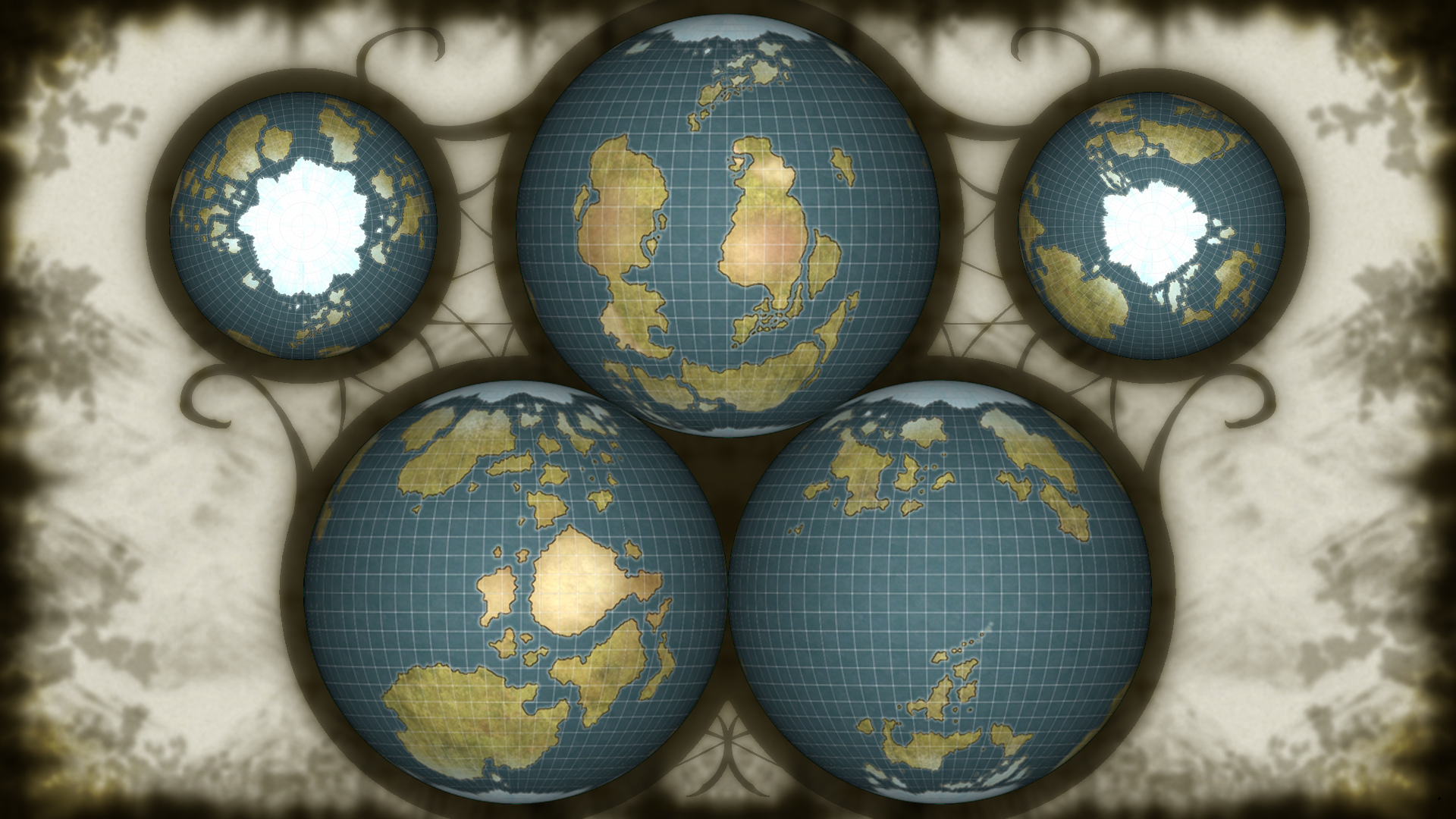
Shape
The shape of Oryth is an oblate spheroid with a faint flattening at the poles and bulging at the equator due to the rotation of the celestial body. Though this was proven by the Scholars of Oryth, there are still many who claim that the world is a flat one, continuing in all directions for an infinite distance. However, many sailors have managed to loop around the entirety of Oryth, disproving this theory.Chemical Composition
Oryth's mass is comprised of iron, oxygen, silicon, magnesium, sulfur, nickel, calcium, and aluminum. There are other, rarer components as well, such as rare minerals and deposits. The most sought-after metal is the lightweight, yet durable, mithral. Many wars and skirmishes have been fought for possession of known mines and caverns that wield such a high reward.Internal Structure
The core of Oryth is a thick, viscous mantle encrusted by a silicate solid crust. This crust and the upper mantle are known together as the lithosphere, which is divided among the ever-shifting tectonic plates. A most peculiar observance by the Scholars of Oryth has discovered that the inner core is actually rotating at a slightly higher velocity than the rest of the planet.Heat
The center of Oryth is a scorching and inhospitable place with temperatures ranging as high as 5,900°C (10.652°F). The Scholars of Oryth actually theorize that the world was significantly hotter and that around 3Gyr, twice the amount of heat would have been produced by the core. The surface of Oryth ranges from -92.1°C - 89.9°C (-133.7°F - 129.9°F) with most humanoids considering 15.5°C - 26.7°C (60°F - 80°F) a comfortable living temperature.Tectonic Plates
The lithosphere of Oryth is divided into a rigid outer layer of tectonic plates that move relative to each other at differing boundary types: convergent, divergent, and transform boundaries. When two plates slide past each other, it creates seismic phenomenons such as earthquakes, volcanic activity, mountain-building, and oceanic trenches. The major plates of Oryth are Arktikos, Bismal, Joramy, Kal'swyn, Ochrid, Osprem, Tof'kra, Xerbthuun, and Yurtus.Surface
The surface of Oryth is primarily below sea level with much of the continental shelf, mountains, volcanoes, oceanic trenches, submarine canyons, oceanic plateaus, abyssal plains, and a world-wide mid-ocean ridge system. The remaining terrain is a variety of different land types depending on the location with mountains, deserts, mesas, plateaus, and chasms throughout. Many natural resources such as plants and minerals are heavily sought after in some areas and can even lead to small skirmishes or all-out war if the need for the resource is overly coveted.Orbit & Rotation
Oryth's rotation is relative to Peloris' casting light. It takes 25h 58m 1.300s for Oryth to complete one full rotation on its current axis. Oryth orbits around Peloris at an average distance of 149,597,500km (92,955,500mi) every 315.125 Peloris days or Sidereal Year. Due to the planet's counter-clockwise rotation, it gives the appearance of a westward direction when looking from the Oryth's surface.Axial Tilt & Seasons
The axial tilt of Oryth is approximately 23.431,2912° with the axis of the orbital plane pointing towards its Celestial Poles. The five seasons of Oryth are determined by the months throughout the year which reflect the points in an orbit that tilts in relation to Peloris. Additionally, they are all named after which of the other 15 celestial bodies are largest (closest) in the night's sky. The Season of Sowing begins on the 13th Day of Fharbis, the Season of Growth begins on the 13th Day of Istbis, the Season of Tending begins on the 13th Day of Celebis, the Season of Harvest begins on the 13th Day of Boccbis and the Season of Rest begins on the 13th Day of Olibis.Finally, there are two solstices throughout the year representing Peloris' alignment with the two tropics of Oryth. The Longus Solstice occurs when Peloris aligns with the Tropic of Sotillion on the 10th Day of Heirobis and the Brevis Solstice occurs when Peloris aligns with the Tropic of Telchur on the 1st Day of Cuthbis.
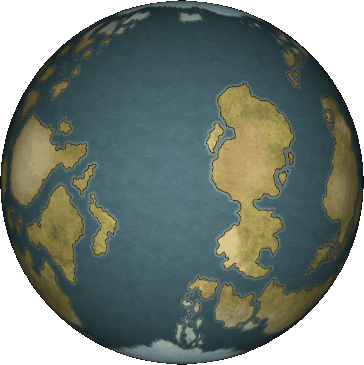
Designations
542nd YoR (25:13)
innumerable additional moonlets
(by Volume)
20.95% O2
~ 1% H2O (Vapor)
0.9340% Ar
0.0413% CO2
0.00182% Ne
0.00052% He
0.00019% CH4
0.00011% Kr
0.00006% H
Life on Oryth
Life on Oryth is a fantastical menagerie in and of itself. Everything lives in a self-sustaining ecosystem, allowing the reproduction and expansion of various plants and animals. Everything on Oryth relies on many organisms throughout the planet. The most complex of beings is the sentient life that was breathed into the planet with the Divine Spark bestowed by the gods. As such, these beings became self-aware and were able to come together (or apart) as a community and elevate their status to fight back against the eternal struggle of survival.Sapient Geography
Sentient beings tend to expand, unlike many of the natural plants and animals of Oryth. Their fight for resources and greed for materialistic objects has led to the needless destruction of wildlife and stripping of Oryth's resources. Though much good has been done in the name of sentience, many have looked up to them as more of a virus than a typical resident of Oryth, often collecting in one spot and terraforming it to their needs until it is unfit to continue at that location causing them to migrate to another.Natural Resources & Land Use
Humanoids tend to flock to areas with an abundance of natural resources, usually forming their colonies near rivers, forests, and bodies of fresh water. They use the surrounding forests or mountains to build shelter and hunt local game to feed themselves. Humanoids have learned how to harvest metal from stone and build effective tools and weaponry to assist them in day-to-day tasks, their ingenuity expanding seemingly every day.Cultural &
Historical View

Many humanoids have established various different (and often opposing) rituals and spiritual beliefs. Wars that are not waged due to resources are almost always waged due to differences in religious dogma. The Scholars of Oryth theorize that this need was a direct reflection of the gods' given Divine Spark, forcing themselves to be worshipped by their creations. A stranger in a new area of Oryth often needs to tread lightly as to not impose on the beliefs or superstitions of the various colonies of Oryth.
Magic & Metaphysics
"I think, therefore I am.
I want, therefore I can".
During the Divine Wars, the battle caused a thinning of the veil between the other Planes of Existence. The Divine Spark bestowed upon the sentient life of Oryth has given them the ability to tap into the veil, allowing them to weave the fabric of creation like one would knit a tapestry. This allows the magic user the ability to pierce the veil momentarily and work miraculous feats of reality-bending skill. By tapping in the Plane of Fire, for example, a caster may harness that energy and summon it to the Material Plane. This, however, has sometimes undesirable consequences on the world, causing a butterfly effect of sorts. A powerful druid might be able to conjure a storm out of mid-air, but this can lead to a catastrophic hurricane hundreds of miles away due to the unbalancing of the natural laws of Oryth.
Magic is a tool that is met with mistrust and fear due to people not understanding or underestimating the power it holds. Some places on Oryth have banned the use of magic altogether, such as the mighty nation of Tok.

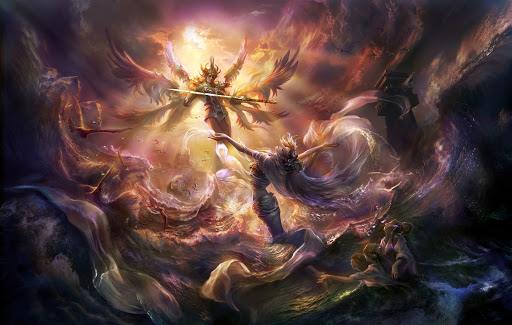
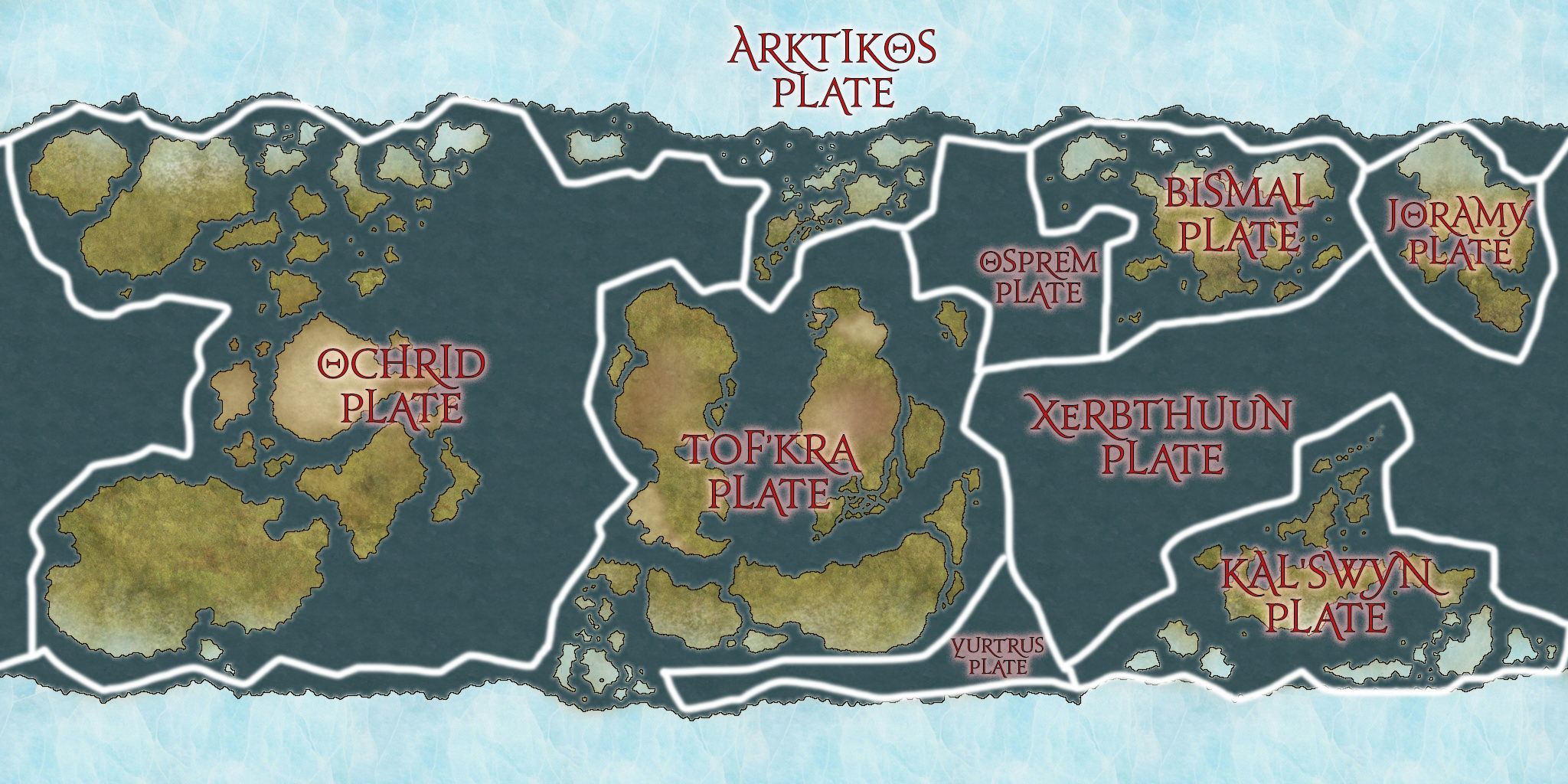

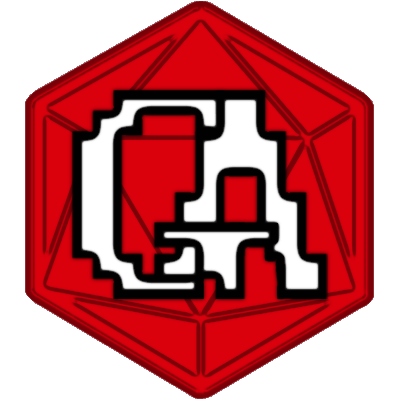

You got a little bit of the history, a little geography, even where the name came from.... Overall very nice article. I especially like the rotating planet gif and video. Also, you don't have to get every detail right when writing science in fiction.... You just have to get enough details right so everyone thinks it's plausible, and I'm pretty sure you did that.
Thank you so much for that! I very much appreciate it. :3